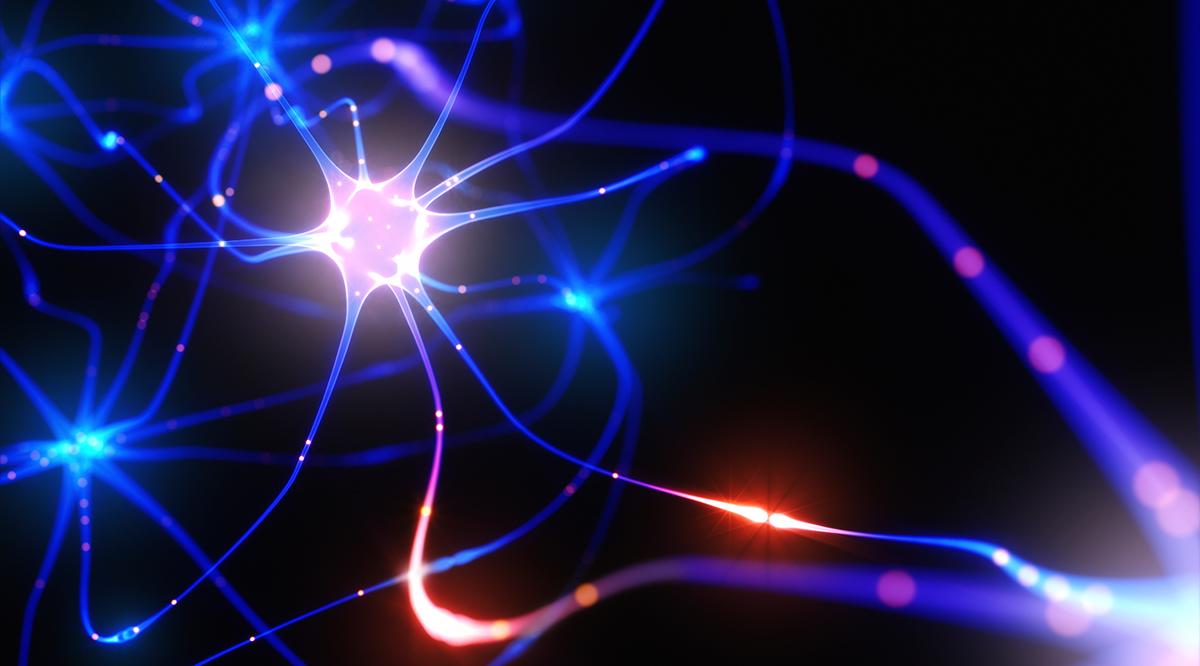When Kevin Tracey, MD, was training as a neurosurgeon in 1985, he had an 11-month-old patient named Janice who changed the course of his career.
Janice had been crawling in the kitchen at the same time her grandmother was preparing to pour boiling pasta water into the sink. The grandmother tripped, spilling scalding water all over the child.
Tracey and his team treated her in the hospital for a month, changing her burn dressings, doing multiple skin grafts, and giving her antibiotics in the hopes of preventing a life-threatening infection. Her family had just celebrated her first birthday when she suddenly went into an inexplicable shock and cardiac arrest.
She died in Tracey’s arms as he tried in vain to resuscitate her.
“Her death haunted me,” he says.
From that day, Tracey became determined to understand why Janice had died.
Working in labs at Weill Cornell Medical Center and Rockefeller University in New York, where he spent years studying the mechanisms in the body that lead to septic shock, his team discovered a molecule called Tumor Necrosis Factor (TNF) that is produced by the body and causes inflammation. When it’s overproduced, it can be deadly. This discovery prompted the development of monoclonal anti-TNF, a drug that’s been used to calm the immune response and save lives from severe sepsis as well as treat patients with chronic inflammatory conditions such as Crohn’s disease and rheumatoid arthritis.
“It’s going to require people to think differently … I think we’re coming to a tipping point when patients will demand [access to bioelectronic medicine] because it can be done safely and it’s much more cost effective.”
Kevin Tracey, MD
Feinstein Institutes for Medical Research in Manhasset, New York
In 1992, he moved to the Feinstein Institutes for Medical Research in Manhasset, New York, where his lab then discovered that the vagus nerve, which connects the organs and the brain, plays an essential role in the immune response and the production of TNF.
“We learned the brain used the vagus nerve as an information superhighway to control the organs,” Tracey says.
This research uncovered something revolutionary: using electricity to stimulate the vagus nerve could halt the production of TNF much more quickly and precisely than using monoclonal anti-TNF.
After more than 25 years of research, Tracey, who is now CEO of the Feinstein Institutes for Medical Research, founded Setpoint Medical Corporation, which developed a device the size of a Tylenol pill that can be surgically inserted into the neck to treat TNF-driven autoimmune disorders. It’s now in clinical trials, being studied in rheumatoid arthritis patients before seeking approval from the Food and Drug Administration (FDA).
Tracey’s work is just a slice of a developing field of medicine known as electroceuticals or bioelectronic medicine that some researchers say has the potential to transform the practice of medicine for a variety of conditions.
Although using electricity in medicine dates to ancient Egypt and Rome, when the electric torpedo fish was used to treat pain, gout, and epilepsy, and some electric devices — such as pacemakers and cochlear implants — have become mainstays in modern medicine, experts believe the use of electricity in medicine is still in its infancy.
“There’s a lot of Frankenstein sensationalism,” says David Paydarfar, MD, chair of the Department of Neurology at the University of Texas at Austin Dell Medical School. “But the ability to give controlled electric stimulation is so risk free, the complications are low. … With pharmaceuticals, you’re putting chemicals into the body. Electroceuticals are really the injection of charge into the body.”
Paydarfar says that the public perception of electricity in medicine took a negative turn during World War II, when it became associated with the unethical experimentation performed by the Nazis. It was also stigmatized in the United States when it was used without appropriate anesthesia in psychiatric hospitals in the mid-1900s and when it was used to treat homosexuality as a mental illness.
Over the past decade, however, research into electroceuticals has taken off, says Jeffrey Ardell, PhD, director of the University of California, Los Angeles, Neurocardiology Center for Excellence.
Today, there are approved devices to treat several conditions, from depression and post-traumatic stress disorder to epilepsy and cancer, and hundreds of other studies and trials are ongoing that are working to unlock bioelectronic medicine’s potential.
“It’s going to require people to think differently,” Tracey says. “I think we’re coming to a tipping point when patients will demand [access to bioelectronic medicine] because it can be done safely and it’s much more cost effective.”
Biological switches
Every function of the body is carried out by neurons, the cells that use electrical impulses to carry messages within the brain and from the brain to the rest of the nervous system. When neurons fire improperly, it can cause both dysfunction and disease.
The idea behind bioelectronic therapy is that clinicians can interrupt disordered activity and potentially regulate neurological pathways by targeting certain electrical impulses.
“We inject electrons in the body, [which] will interact with things in the body that have charge,” Paydarfar says. “We’re calling them biological switches.”
With epilepsy, for example, seizures are caused by a neurological circuit in the brain firing rhythmically, instead of in a healthy, asynchronized pattern, Paydarfar explains. Electrical stimulation can interrupt the neurons’ oscillations and restore the normal patterns.
“We know a lot about neurons,” Paydarfar says. “The industry is doing responsive neural stimulation using a sensor implanted deep in [the] brain that senses when things are not going well and starts the stimulation.”
The FDA has approved a device implanted near the collarbone that treats epileptic seizures by stimulating the vagus nerve, the same nerve Tracey is targeting to alleviate symptoms of autoimmune disorders and sepsis. It is also approved to treat depression and stroke, and there is some research indicating stimulating the vagus nerve also can help alleviate symptoms of post-traumatic stress disorder and possibly long COVID-19.
Transcutaneous Electrical Nerve Stimulation (TENS), a device that uses low-voltage electrical current to block neurons from sending pain signals to the brain, has been used in therapy for a variety of painful conditions, from fibromyalgia to menstrual pain.
“We inject electrons in the body, [which] will interact with things in the body that have charge. …We’re calling them biological switches.”
David Paydarfar, MD
University of Texas at Austin Dell Medical School
Another electroceutical technique, tumor treating fields (TT fields), is approved for use against glioblastoma multiforme, an aggressive form of brain tumor. Mild electrical fields pulsed from a device attached to the scalp interrupt the process that the cancer cells use to multiply without impacting healthy cells or causing the side effects that come with radiation or chemotherapy.
This is one of the promising aspects of electroceuticals; that they may effectively treat serious conditions with more precision and fewer side effects than using drugs or invasive surgery that have traditionally been the only options.
There are currently bioelectronic devices approved to treat migraines, cardiac arrhythmias, obsessive compulsive disorder, depression, chronic pain, and stroke, among other conditions. Researchers are still studying how electricity can be used to treat a variety of additional conditions, including wounds and diabetes.
Ardell, who has studied bioelectronic medicine throughout his 45-year career and is a pioneer in the field of neurocardiology, is developing electroceuticals to treat heart failure.
“Instead of using drugs that target the heart, we activate the autonomic nervous system,” he says.
He believes that devices to treat cardiac issues are not far behind the ones that have already been approved for things like pain and epilepsy.
“It’s really moving forward.”
Understanding “dosing”
But the widespread use of electroceuticals has been delayed in part because researchers have faced challenges in understanding aspects of the developing field.
Ardell says that many clinical trials in this area have failed because researchers didn’t take the time to understand the mechanics of how electricity works therapeutically.
“We don’t understand why it works,” Paydarfar adds. “What are the mechanisms of action? What are spatial and temporal scales? How is optimal dose profile determined? … With electroceutical science, how it works is a real concern.”
Paydarfar says one of the main challenges is understanding how to get the “dosing” correct. While many studies have shown that electricity can help treat conditions, there still isn’t a consistent understanding of how to determine the optimal frequency and timing of the stimulations.
“We’re trying to find a way to stimulate the structure and switch the state without side effects,” he says.
“If you give too little energy, you’re wasting energy, you’re draining battery life, [or] you have a failed outcome. If it’s too much energy ... you have damaged tissue [or] off-target effects.”
Paydarfar and his team are studying how they can use algorithms to predict the optimal frequency, wavelength, and timing of a stimulation to be effective.
Ardell believes that researchers are on the cusp of learning how to target nerves even more specifically, which is vital to personalizing the treatment of different conditions.
“There’s not one type of bioelectronic medicine that is perfect for everything,” he says. “There are lots of things going on with improvements to the interfaces of the nerve.”
Tracey says that the business of medicine also tends to be slow to adopt innovative approaches.
“It has to do with human behavior and the conservative nature of medical practice,” Tracey says. “It’s not bad to be conservative in medicine … you don’t want your doctor rushing to every new, shiny object … [but] it shouldn’t all be driven simply as a business process decision either.”
Because of the safety and efficacy that bioelectronic devices have demonstrated over decades of study, Tracey believes that it’s inevitable they will eventually replace many drugs that are currently used, especially those that are expensive and have serious side effects.
However, it will require medical professionals to be willing to think of the body in a more integrated way and be willing to work across specialties and industries, he says.
“The future of bioelectronic medicine is going to be one of growth and opportunity for young people in medicine,” Tracey says. “It’s a unique time in history when we have some of the most powerful tools in biology and molecular biology that we can combine with and leverage with powerful technology coming out of Silicon Valley. … [We can] use those tools ... to hack directly into nerves.”

